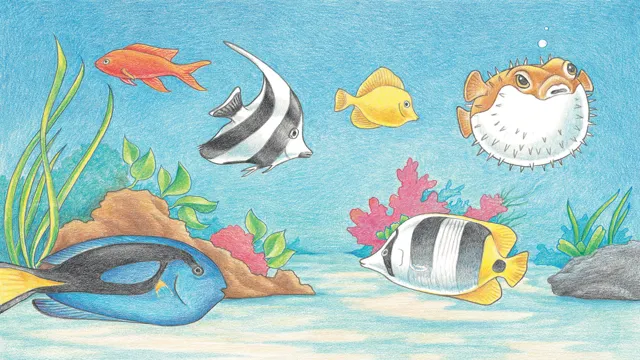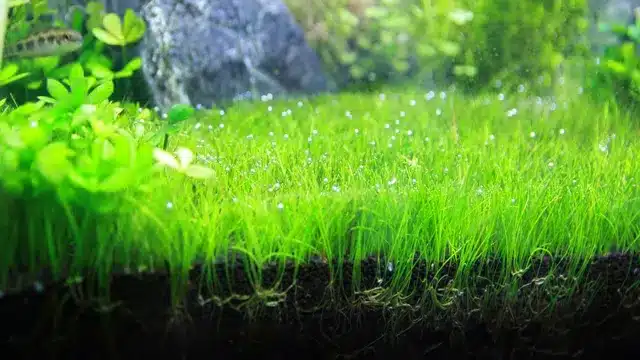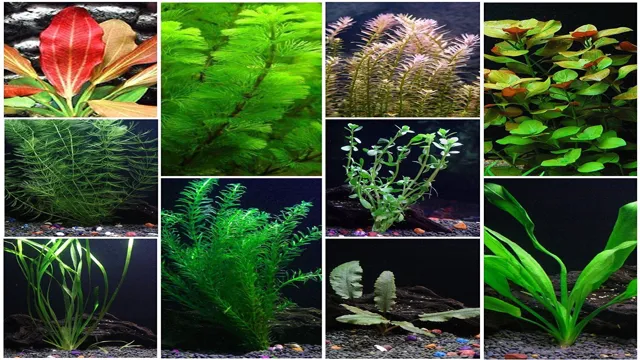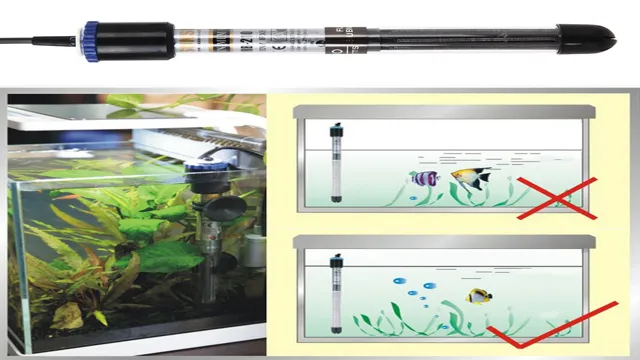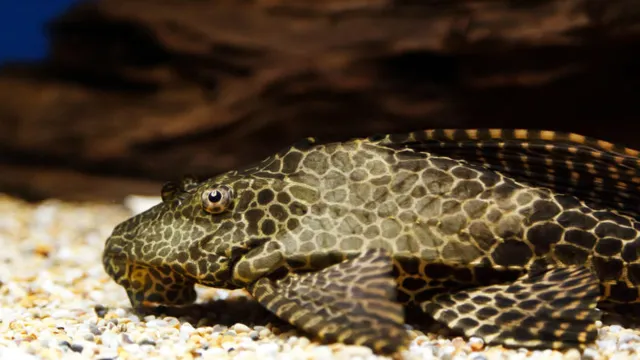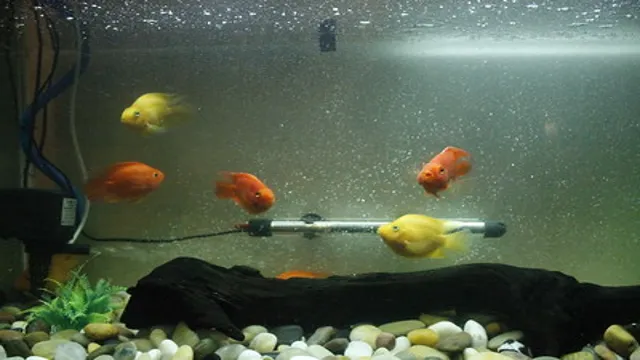Have you ever wanted to draw an aquarium but didn’t know where to start? You’re not alone. Drawing a realistic-looking aquarium can seem daunting, but with a few tips and tricks, you’ll be on your way to creating a beautiful underwater scene. First, consider what type of aquarium you want to draw.
Is it a freshwater or saltwater tank? What types of fish and plants do you want to include? These choices will impact the overall look of your drawing. Once you’ve decided on the type of aquarium, begin by sketching the layout. Start with the tank itself, and then add any decorations or plants you want to include.
Don’t worry about adding fish just yet. Next, focus on the details. Give the tank some texture by adding shading and reflections.
Use lines to create the illusion of water ripples and add depth by drawing plants and decorations in the foreground and background. When it comes to drawing the fish, take your time. Look up reference images of the types of fish you want to include and study their shapes and patterns.
Use colors and shading to bring them to life and make them appear three-dimensional. Remember, the key to drawing an aquarium is paying attention to the details. Observing real-life aquariums can help you understand how things look under the water and how the light reflects off the surfaces.
With a little practice and patience, you can create a stunning aquarium drawing that will impress everyone who sees it.
Materials Needed
To draw an aquarium, you’ll need a few simple materials. First, you’ll need some drawing paper or a sketchbook to work on. You can choose any size you feel comfortable with, although a larger sheet may allow for more detail in your drawing.
Next, you’ll need your drawing tools of choice. This could be anything from pencils to colored pencils, markers, or even paint. Many artists prefer to use a range of different tools to create depth and texture in their drawings.
Finally, you’ll need a reference to work from. This could be a photo of an existing aquarium or a video you found online. Make sure you have a clear idea of what you want to draw before you start, and don’t be afraid to experiment and make changes along the way.
With a little practice and patience, you’ll soon be able to create beautiful and detailed aquarium drawings that capture the magic of underwater life.
Pencil, eraser, paper, ruler, compass, protractor, coloring materials
When it comes to drawing, jotting down notes, or taking measurements, having the right tools on hand can make all the difference. That’s why it’s important to ensure you have all the necessary materials before jumping into a project. For basic drawing or sketching, you’ll want to ensure you have a trusty pencil paired with an eraser or two for corrections.
For more precise measurements, a ruler, compass, and protractor will come in handy. If you plan on adding some color, be sure to have coloring materials like colored pencils or markers on hand. With these materials, you’ll be ready to take on any project that comes your way!
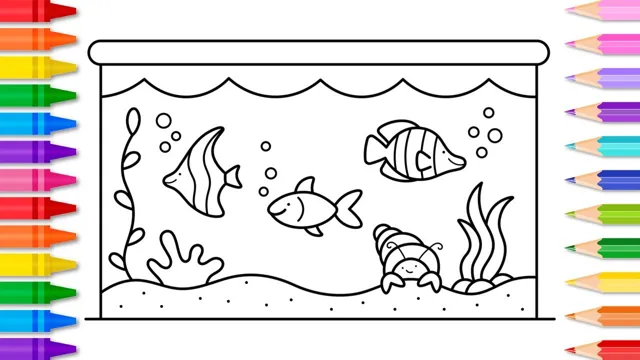
Sketching the Tank
If you’re interested in learning how to draw an aquarium, you first need to sketch the tank itself. To begin, draw a rectangle or square to represent the outline of the tank. Make sure to add small lines at the corners to show where the glass panels meet.
Next, draw the stand or base that the tank will rest on, adding small details such as bolts or legs for extra realism. Now comes the fun part – adding the water and fish! Use curved lines to represent the water level and add details like plants and rocks. For the fish, you can start by sketching their basic shapes and then adding details like fins and scales.
With some practice, you can create a lively underwater world on paper. Remember, don’t be afraid to get creative and experiment with different angles and perspectives. By following these steps, you’ll be able to draw an amazing aquarium that’s sure to impress. (See Also: How to Clean Plastic Plants in Aquarium to Ensure Safe and Healthy Habitat)
Draw rectangle for the tank, add curves for the corners and base
When it comes to sketching a tank, it’s important to start with the right shape. To begin, draw a rectangle for the base of the tank and then add curves for the corners to give it a more rounded appearance. From there, you can sketch the rest of the tank, paying close attention to the details and making sure it looks accurate and proportional.
By taking your time and using a steady hand, you can create a great-looking tank sketch that captures all the details and nuances of this unique machine. So if you’re a fan of tanks or just looking to improve your sketching skills, be sure to give this technique a try and see what kind of results you can achieve. With the right approach and a bit of practice, you can create tanks that are both realistic and visually appealing, making them great additions to any art collection.
So why not try it out today and see what kind of tanks you can create?
Adding Décor and Life Forms
Are you wondering how to draw an aquarium that looks lively and engaging? Well, adding décor and life forms is the key to making your aquarium look like a beautiful underwater world. You can use various materials such as rocks, plants, and sand to create the base of your aquarium. Once your base is ready, it’s time to add a pop of color to your aquarium by using some unique and colorful décor like treasure chests or shipwrecks.
But it’s not just about the décor, you also need to add some life forms to make it look realistic. You can start by drawing some coral reefs or seaweed in the background to create the illusion of depth. Next, add some fish that you like or imagine, such as Nemo or Dory, or even sharks and whales.
Remember, the key to drawing an aquarium is to be creative and have fun with it. You can even experiment with different drawing techniques or styles to make your aquarium more interesting. Don’t be afraid to make mistakes, learn from them, and keep on trying until you get the perfect aquarium.
Overall, drawing an aquarium can be a fun and enjoyable experience. Just let your imagination run wild, and you’ll surely create a beautiful masterpiece that you’ll be proud of. So, grab your pencils and paper, and let’s get creative!
Draw decorations, rocks, shells, plants with different shapes and sizes, add fish, snails
When it comes to creating an aquatic environment in your aquarium, decoration and life forms play a crucial role. Adding various décor items such as rocks, shells and plants of different shapes and sizes not only creates an aesthetically pleasing aquarium but also provides hiding places for your fish. It’s essential to remember that some fish may need a place to hide to feel secure.
Adding fish and other aquatic species such as snails, shrimp, and other appropriate species add a natural touch to your aquarium and help create a balanced ecosystem. It’s vital to consider the type of fish you are adding, their size, and compatibility with other species in your aquarium. In addition, ensure that the décor and life forms you add are aquarium compatible and won’t compromise the aquarium water quality.
Creating an environment that closely resembles a natural underwater ecosystem ensures that your fish are healthy and happy.
Coloring the Aquarium
Learning how to draw an aquarium can be a fun and rewarding experience. To start, you’ll need to consider the composition of the tank. Think about the types of fish and plants that you want to include, as well as the overall size and shape of the aquarium.
With a rough sketch in mind, you can begin to add in the details. One important factor to consider is color. Bright, vibrant colors can help to make your drawing pop and bring the aquarium to life.
Be sure to use a variety of hues to capture the diverse range of colors found in real-life aquariums. With practice and patience, you’ll soon be able to create beautiful, realistic aquarium scenes that are sure to impress. (See Also: How to Go to Sea Aquarium by MRT: A Comprehensive Guide for Convenient Transportation)
Shade the background of the tank with blue and add green for the plants, choose the colors and patterns for the fish and decorations
When it comes to coloring your aquarium, there are a few things to consider. First, you want to create a realistic backdrop for your underwater world. Start by shading the background of the tank with blue to simulate the look of open water.
Add some green for plants to create a natural and vibrant environment for your fish. Next, think about the colors and patterns you want for your fish and decorations. You can choose bright and bold hues to make them stand out or more muted tones for a calming and peaceful vibe.
Whatever you choose, make sure the colors complement each other and fit your overall theme. Don’t be afraid to get creative and mix and match different patterns and textures for a unique and personalized aquarium. By using these tips and carefully planning your color scheme, you can create a visually stunning and captivating underwater world that both you and your fish will enjoy.
Adding Depth and Shadows
If you want to learn how to draw an aquarium, adding depth and shadows is an essential skill to master. To create the illusion of a three-dimensional environment, you’ll need to take into consideration the light source and where it’s hitting the objects within your drawing. Shadows should be cast in the direction opposite the light source, while objects closer to the light source will be brighter than those cast in shadow.
The water within the aquarium will also affect the way the light behaves, so consider the refraction and reflection of light as it passes through the water and reaches the plants and fish within the tank. By adding these details, your aquarium drawing will come to life and appear much more realistic. Don’t be afraid to experiment with different lighting scenarios and perspectives until you find the one that looks the most convincing.
With practice, you’ll be able to create stunning aquarium drawings that look like the real thing.
Use pencil for hatching, add shadows behind decorations and life forms, use shading to create depth and dimension
When it comes to creating depth and dimension in your artwork, there are a few things that can make a big difference. First and foremost, use a pencil for hatching. This technique involves creating a series of parallel lines that build up to form a texture.
You can use hatching to add shading and texture to your images, making them look more three-dimensional. Additionally, adding shadows behind decorative elements and life forms can help them stand out from the page. This is especially important if you want to create a sense of depth in your artwork.
Lastly, shading is a great way to create depth and dimension. By varying your pencil pressure, you can create darker and lighter areas that make your artwork look more three-dimensional. Overall, these techniques can make a big difference in the look and feel of your artwork, while also helping to create a more realistic and immersive experience for the viewer.
So, grab your pencil and start experimenting with these techniques to take your art to the next level!
Final Touches
After adding all the basic elements to your aquarium drawing, it’s time to add some final touches to make it look more realistic and exciting. One way to achieve this is by adding some plants and rocks to create a natural habitat for the fish. You can also include some small details like bubbles, coral, or algae to make it look more vibrant and lifelike.
Another technique is to add different types of fish to your aquarium, which will give it a unique and visually interesting look. Make sure to research the types of fish you want to add and their compatibility with each other. Finally, you can experiment with different lighting and shading techniques to create a more dynamic and three-dimensional effect.
By following these additional steps, you can turn your basic aquarium drawing into a beautiful and realistic work of art.
Add highlights to life forms and decor, erase guide lines and add water reflection to create a realistic finish
To bring out the true essence of your artwork, it is important to add the final touches. Adding highlights to life forms and décor can create a three-dimensional effect that makes them pop. But before you do that, it is important to erase any guide lines that are still visible so that they do not detract from the overall impact. (See Also: How to Fix Aquarium Internal Filter: Step-by-Step Guide for Beginners)
Additionally, by incorporating water reflections, you can create a realistic finish that adds depth and movement to the piece. Think of it as adding the cherry on top of a cake – it’s the finishing touch that makes all the difference. So when you’re done, step back and admire your work – you’ve created something truly special.
Conclusion
In conclusion, drawing an aquarium is easy as fishin’ for compliments! Just follow these simple steps and you’ll be swimming in artistic success. Remember to add plenty of vibrant colors and interesting details like shells, coral, and plants to make your drawing truly come to life. With a little patience and practice, you’ll soon have a fish tank masterpiece that’s worthy of a standing ovation.
So grab your pencils, dive in, and let your creativity flow like a school of tropical fish!”
FAQs
What materials do I need to draw an aquarium?
You will need paper, a pen or pencil, markers or colored pencils, a ruler, and a compass.
Can I use different colors for the different fish in the aquarium?
Yes, you can use any colors you like for the fish, plants, and other elements in the aquarium.
How do I draw the glass of the aquarium?
Draw a rectangle or square for the shape of the aquarium, then draw vertical and horizontal lines inside the shape to create the illusion of glass.
What is the best way to draw the fish and other sea creatures in the aquarium?
Start by sketching the basic shapes of the fish and then add details and color. Look at pictures of real fish and sea creatures for inspiration.
Do I need to draw plants and rocks in the aquarium?
Adding plants, rocks, and other elements can make your aquarium drawing more interesting and realistic.
Can I use a reference image when drawing an aquarium?
Yes, using a reference image can be helpful for getting the proportions and details correct.
How can I make my aquarium drawing look more 3D?
Use shading and highlights to create the illusion of depth and dimension in your drawing. You can also add details like bubbles or shadows to make it look more realistic.

